United States consistently underestimates Cuban intelligence, sources say
March 18, 2024 5 Comments
 AGENTS OF THE CUBAN government have “penetrated virtually every segment of the United States national security structure,” enabling Havana to share actionable intelligence with Russia and China, according to a new report. Citing former United States and Cuban intelligence officers, The Wall Street Journal said on Saturday that Washington’s counter- intelligence efforts are no match for Cuba and its intelligence service, the Dirección de Inteligencia (DI). The DI is “the best damn intelligence service in the world” for cultivating agents, according to Brian Latell, a retired CIA analyst who served as the U.S. Intelligence Community’s National Intelligence Officer for Latin America. Latell told The Wall Street Journal that the Dirección de Inteligencia bears the imprint of Fidel Castro himself, who took a personal interest in running the service during his reign.
AGENTS OF THE CUBAN government have “penetrated virtually every segment of the United States national security structure,” enabling Havana to share actionable intelligence with Russia and China, according to a new report. Citing former United States and Cuban intelligence officers, The Wall Street Journal said on Saturday that Washington’s counter- intelligence efforts are no match for Cuba and its intelligence service, the Dirección de Inteligencia (DI). The DI is “the best damn intelligence service in the world” for cultivating agents, according to Brian Latell, a retired CIA analyst who served as the U.S. Intelligence Community’s National Intelligence Officer for Latin America. Latell told The Wall Street Journal that the Dirección de Inteligencia bears the imprint of Fidel Castro himself, who took a personal interest in running the service during his reign.
Among the strengths of the Cuban intelligence service is its ability to recruit Americans who are motivated by ideological reasons, rather than by financial gain. The Cubans have historically approached Americans at a young age, usually at universities in the United States or other countries in the Americas. They cultivate those relationships by employing strategic patience that pays off many years —even decades— later. By recruiting ideological sympathizers, the Cubans rarely need to pay their agents large amounts of money, as the cases of Defense Intelligence Agency analyst Ana Belén Montes and State Department diplomat Manuel Rocha suggest. Many Cuban agents enter military service in the United States, which means they acquire Secret or Top-Secret clearances. Others are instructed to penetrate anti-communist groups of Cuban-Americans in southern Florida, according to The Wall Street Journal.
The U.S. counterintelligence strategy prioritizes Russia and China, which means that Cuban intelligence operations are treated as “an afterthought,” claims the paper. The Federal Bureau of Investigation (FBI), America’s primary counterintelligence agency, dedicates relatively few resources to investigating Cuban intelligence. Its efforts are chronically “understaffed and outmatched” by Havana, according to former counterintelligence officers who spoke to The Wall Street Journal. The paper notes that the FBI is often aware of several dozen cases of “actual or potential” Cuban agents operating in the U.S. However, it routinely lacks the requisite resources to investigate them.
► Author: Ian Allen | Date: 18 March 2024 | Permalink
 WILLIAM BURNS, DIRECTOR OF the United States Central Intelligence Agency (CIA), reportedly visited in secret at least two East African nations last week, amidst growing tensions and instability in the region. The trip was confirmed by both the Kenyan and Somali governments after Burns had already returned to the United States.
WILLIAM BURNS, DIRECTOR OF the United States Central Intelligence Agency (CIA), reportedly visited in secret at least two East African nations last week, amidst growing tensions and instability in the region. The trip was confirmed by both the Kenyan and Somali governments after Burns had already returned to the United States.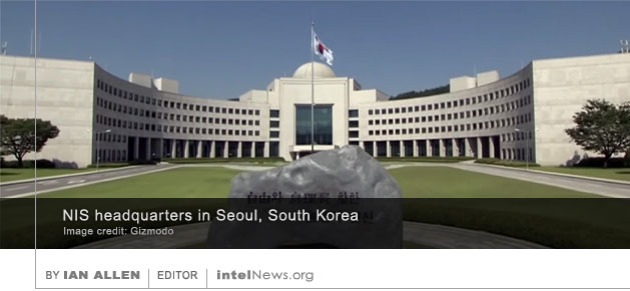 IN A SURPRISING MOVE that has stirred curiosity across Asia, South Korean President Yoon Suk Yeol has abruptly ousted the entire senior leadership of the National Intelligence Service (NIS), a powerful entity in the country. The
IN A SURPRISING MOVE that has stirred curiosity across Asia, South Korean President Yoon Suk Yeol has abruptly ousted the entire senior leadership of the National Intelligence Service (NIS), a powerful entity in the country. The  AUTHORITIES IN BRITAIN HAVE arrested two individuals on charges of espionage, among them a researcher for the British parliament who is being investigated for spying for China.
AUTHORITIES IN BRITAIN HAVE arrested two individuals on charges of espionage, among them a researcher for the British parliament who is being investigated for spying for China. 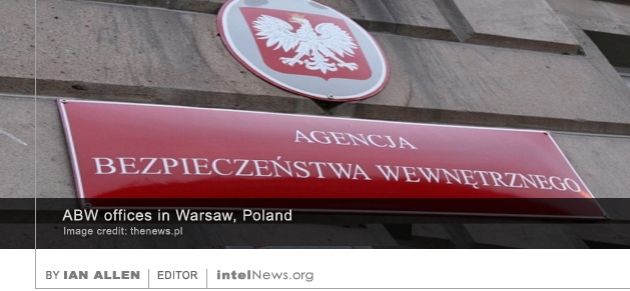 DURING THE COLD WAR, Poland hosted the Eastern Bloc’s only known intelligence training facility for operations officers situated outside of the Soviet Union. The highly secretive training facility operated out of a heavily guarded compound located near the northern Polish village of Stare Kiejkuty in Gmina Szczytno county, approximately 65 miles from the Polish-Soviet border. Today, 50 years after its establishment, the facility continues to train the operations officers of post-communist Poland’s intelligence services.
DURING THE COLD WAR, Poland hosted the Eastern Bloc’s only known intelligence training facility for operations officers situated outside of the Soviet Union. The highly secretive training facility operated out of a heavily guarded compound located near the northern Polish village of Stare Kiejkuty in Gmina Szczytno county, approximately 65 miles from the Polish-Soviet border. Today, 50 years after its establishment, the facility continues to train the operations officers of post-communist Poland’s intelligence services. ONE ISRAELI AND TWO Italian intelligence officers are among the victims of a boating accident in northern Italy. Local reports indicate that the incident occurred last Sunday evening, when a passenger boat named the Gooduria capsized and sank rapidly in Italian territorial waters. The boat was on a sightseeing trip near the Italian shoreline of Lake Maggiore, a popular destination situated on the southern side of the Alps between Italy and Switzerland.
ONE ISRAELI AND TWO Italian intelligence officers are among the victims of a boating accident in northern Italy. Local reports indicate that the incident occurred last Sunday evening, when a passenger boat named the Gooduria capsized and sank rapidly in Italian territorial waters. The boat was on a sightseeing trip near the Italian shoreline of Lake Maggiore, a popular destination situated on the southern side of the Alps between Italy and Switzerland.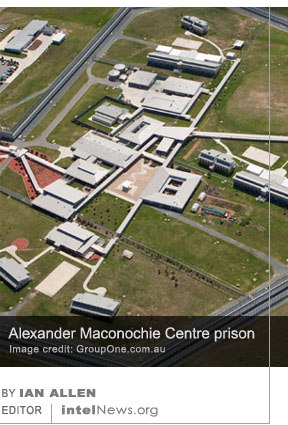 AN AUSTRALIAN HIGH COURT has released the sentencing remarks in an unprecedented closed-door trial of an intelligence officer, identified only as “Witness J”, who was convicted in 2019 of a crime that cannot be revealed. The man, who is also known as “Prisoner 123458,” was given a jail sentence in November of 2019. His sentencing came following a closed-door hearing, which was described by a judge as “generally undesirable” and “unusual”. The very existence of the court case
AN AUSTRALIAN HIGH COURT has released the sentencing remarks in an unprecedented closed-door trial of an intelligence officer, identified only as “Witness J”, who was convicted in 2019 of a crime that cannot be revealed. The man, who is also known as “Prisoner 123458,” was given a jail sentence in November of 2019. His sentencing came following a closed-door hearing, which was described by a judge as “generally undesirable” and “unusual”. The very existence of the court case 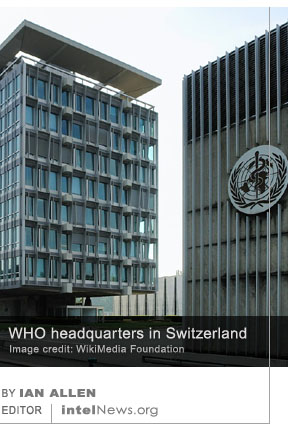 THE WORLD HEALTH ORGANIZATION has called on the United States and China to share what they know about the source of the COVID-19 pandemic. The call, made by WHO’s Director-General Dr. Tedros Adhanom Ghebreyesus and others, came days after United States Federal Bureau of Investigation Director Christopher Wray said in a television interview that COVID-19 “most likely” originated from a Chinese government laboratory.
THE WORLD HEALTH ORGANIZATION has called on the United States and China to share what they know about the source of the COVID-19 pandemic. The call, made by WHO’s Director-General Dr. Tedros Adhanom Ghebreyesus and others, came days after United States Federal Bureau of Investigation Director Christopher Wray said in a television interview that COVID-19 “most likely” originated from a Chinese government laboratory.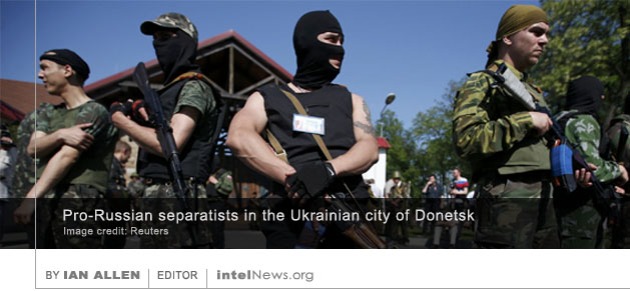 A LEADING RUSSIAN NATIONALIST, who styled himself as the originator of ‘Z’, the symbol of the Russian campaign in Ukraine, has
A LEADING RUSSIAN NATIONALIST, who styled himself as the originator of ‘Z’, the symbol of the Russian campaign in Ukraine, has  THE GOVERNMENT OF WAR-torn Libya announced on Thursday that William Burns, director of the United States Central Intelligence Agency (CIA) was in capital Tripoli for discussions with senior Libyan officials. By visiting Tripoli, Burns became the highest-ranking American government official to travel to the North African country under the presidency of Joe Biden.
THE GOVERNMENT OF WAR-torn Libya announced on Thursday that William Burns, director of the United States Central Intelligence Agency (CIA) was in capital Tripoli for discussions with senior Libyan officials. By visiting Tripoli, Burns became the highest-ranking American government official to travel to the North African country under the presidency of Joe Biden.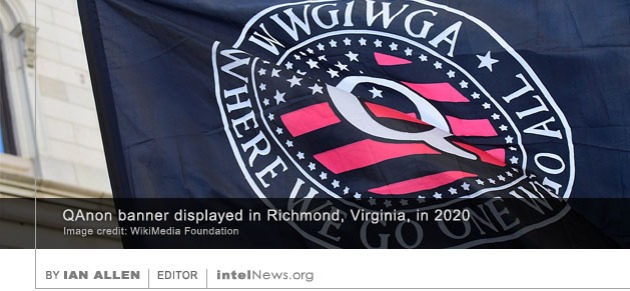 FEMALE TARGETS OF CONSPIRACY theories propagated by QAnon adherents face up to 10 times more online harassment and abuse than male targets, a behavioral study of pro-QAnon online users has found. QAnon refers to an American-rooted conspiracy theory that views former United States President Donald Trump as a central figure in a behind-the-scenes battle against a sinister cabal of enemies, known as the “deep state”. According to QAnon adherents, “deep state” elites (politicians, entertainment figures and other celebrities) consist of Satan-worshiping cannibals who traffic children for sex. QAnon adherents also believe that these elites will be routed during “The Storm”, a final reckoning between Trump and the “deep state”, which will result in the arrest and physical extermination of all elites.
FEMALE TARGETS OF CONSPIRACY theories propagated by QAnon adherents face up to 10 times more online harassment and abuse than male targets, a behavioral study of pro-QAnon online users has found. QAnon refers to an American-rooted conspiracy theory that views former United States President Donald Trump as a central figure in a behind-the-scenes battle against a sinister cabal of enemies, known as the “deep state”. According to QAnon adherents, “deep state” elites (politicians, entertainment figures and other celebrities) consist of Satan-worshiping cannibals who traffic children for sex. QAnon adherents also believe that these elites will be routed during “The Storm”, a final reckoning between Trump and the “deep state”, which will result in the arrest and physical extermination of all elites. MULTIPLE NEWS OUTLETS CLAIMED on Wednesday that Monday’s search by authorities of a Florida residential compound belonging to former United States President Donald Trump was based on information provided to the Federal Bureau of Investigation by a confidential human source. The source reportedly gave the FBI details about a number of classified documents that were allegedly hidden in Trump’s Florida estate, as well as their precise location.
MULTIPLE NEWS OUTLETS CLAIMED on Wednesday that Monday’s search by authorities of a Florida residential compound belonging to former United States President Donald Trump was based on information provided to the Federal Bureau of Investigation by a confidential human source. The source reportedly gave the FBI details about a number of classified documents that were allegedly hidden in Trump’s Florida estate, as well as their precise location. THE POLITICAL FALLOUT OF the Russian invasion of Ukraine is prompting the European Union (EU) to radically upgrade the security of its facilities, according to a series of internal memoranda. On July 14, the EUObserver, an EU-focused news agency based in Brussels,
THE POLITICAL FALLOUT OF the Russian invasion of Ukraine is prompting the European Union (EU) to radically upgrade the security of its facilities, according to a series of internal memoranda. On July 14, the EUObserver, an EU-focused news agency based in Brussels,  IN A RARE MOVE, Israel released the identity last weekend of a special operations officer who was killed by Islamic Hamas during a 2018 covert mission in the Gaza Strip. As intelNews
IN A RARE MOVE, Israel released the identity last weekend of a special operations officer who was killed by Islamic Hamas during a 2018 covert mission in the Gaza Strip. As intelNews  RUSSIAN STATE COMPANIES, BUSINESSES and individuals are being targeted in an unprecedented wave of attacks by digital assailants, according to observers, who say they are surprised by its ferocity. Since February of this year, hackers have accessed the personal financial data of pro-Kremlin oligarchs, stolen millions of internal emails stored on Russian government severs, and defaced high-profile websites across the nation. The Washington Post, which
RUSSIAN STATE COMPANIES, BUSINESSES and individuals are being targeted in an unprecedented wave of attacks by digital assailants, according to observers, who say they are surprised by its ferocity. Since February of this year, hackers have accessed the personal financial data of pro-Kremlin oligarchs, stolen millions of internal emails stored on Russian government severs, and defaced high-profile websites across the nation. The Washington Post, which 





